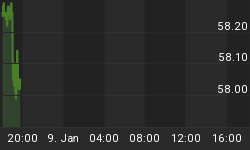Not only does America have milk—it’s got a surplus of over 8 million metric tons, forcing dairy farms to shutter and farmers to simply start dumping millions of gallons of milk that far exceeds domestic and foreign demand.
Declining consumption, increased production, retaliatory tariffs and lower prices in the face of increased costs have been walloping American farmers for some two years now, according to the Reedsburg Times Press.
Northeastern states are the most affected by the glut. The State of Wisconsin has seen a net loss of more than 400 dairy farms this year alone, and in December last year, the state’s farmers dumped a record 160 million pounds of skim milk they couldn’t sell. That’s three times the amount they were forced to dump in 2012, according to CSMonitor.
By July, farmers in the Northeast had dumped 145 million pounds of milk, and 23.6 million pounds of that was dumped in July alone, according to Bloomberg.
Much of the blame will be laid on Canada, which moved last year to implement its own supply management by restricting dairy trade from the U.S.
But the blame isn’t all about Canada, and you have to follow some less direct paths to the end of this glut.
For instance, the European Union has also seen a surge in its exports of dairy, and because Russia in 2014 largely banned all dairy exports from the EU, the EU has tapped up other markets, pushing out American dairy.
Nor is it just about exports.
Americans, while enjoying a brief flirtation with a yogurt craze, are now weaning themselves off milk, which has always been the dairy farmers top revenue generator.
But American farmers aren’t necessarily like other industries from an operational perspective. They milk cows whether the market wants them to or not. They keep producing, even when supply is at the glut level. Then, it’s either shut down or find another way to put all the milk to use.
“Dairy farmers are free-market guys—they don’t want to be told how much to produce,” Richard A. Ball, commissioner of New York’s Department of Agriculture and Markets, told Bloomberg. “It’s a lot more fun to talk about how to increase demand than restrict what they’re doing.” Related: $100M Saudi Payment For Syria Fails To Help ‘Davos in the Desert’
One potential light amid all this dairy darkness is the ‘New NAFTA’ agreement reached at the end of September, replacing NAFTA with the United States-Mexico-Canada Agreement (USMCA), which will give the U.S. greater access to the Canadian dairy market. In other words, dairy farmers from New York and Wisconsin, most notably, will be able to sell more of their product to Canada’s protected dairy market. In figures, it means opening up the Canadian market to American dairy farmers by 3.6 percent—or, accessing 3.6 percent of Canada’s $16-billion dairy market.
According to the Wisconsin Agriculturalist, prior to the new trade deal, Canada had a 7.5-percent tariff on milk exports that were within quotas. Once it fell outside of quotas, that tariff became 241 percent. For blended dairy powder, over-quota tariffs were 270 percent.
So the new deal is a potential light—but not enough, say some. And while it might have somewhat of a stabilizing effect, it’s not enough to raise prices for American farmers.
Other milk deals with top trading partners Mexico and China will have to be realized for American farmers to see prices increase at all—and this is where Trump’s tariffs still really hurt. Last year, U.S. producers sold $1.31 billion in dairy products (cheese, mostly) to Mexico, and $576 million to China. Both are now levying new tariffs on American dairy.
According to a study commissioned by the U.S. Dairy Export Council (USDEC), retaliatory tariffs by China and Mexico could lower dairy exports by $2.7 billion and depress dairy farmers' revenues by $16.6 billion over the next several years.
And a little good news on the domestic front wouldn’t hurt, either. Milk is being vilified by food gurus and health figures.
There are plenty of other domestic enemies to the American dairy farmer, too. According to Public Opinion Online, more than 100 farmers have seen their supply contracts canceled by Dean Foods to make way for Walmart to start producing its own milk and attempt to dominate the supply chain. And from a price point, the retail giant is facing a win-win situation. While the national average for a gallon of milk is around $3.23, Walmart is selling its own brand for $2.
By Fred Dunkley for Safehaven.com
More Top Reads From Safehaven.com:
















